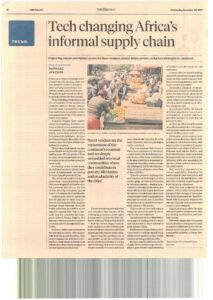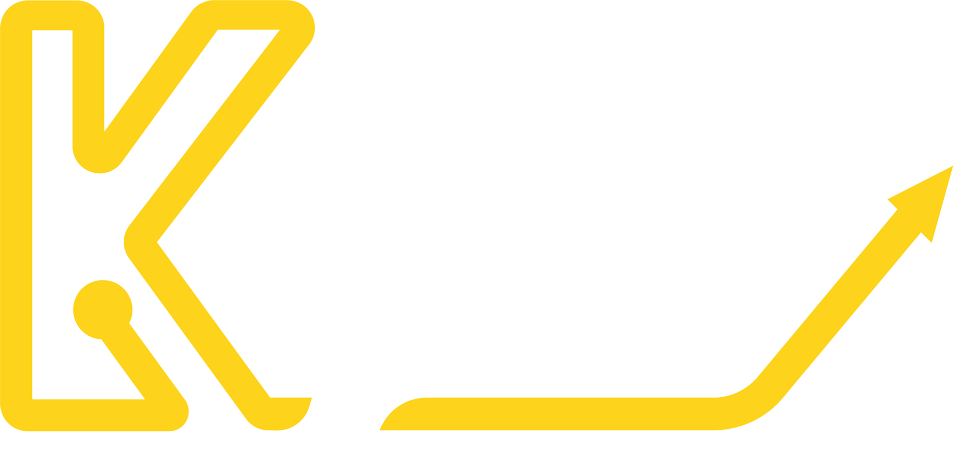From Stockrooms To Stalls: The Role of Digitization in Africa’s Informal Supply Chain

Africa has a vibrant informal sector characterized by buzzing street vendors sprawled across major cities, mom-and-pop stores tucked into narrow arcades, and hawkers peddling anything from soft drinks to electronic devices on the roadside.
These budding entrepreneurs are the cornerstone of the continent’s economy. They are deeply embedded into local communities where they contribute to poverty alleviation and the productivity of the cities in which they operate.
However, despite their significance in propelling economic activity in Africa’s rural and urban environments, the informal sector is largely uncoordinated and suffers from structural challenges – the most prominent being in the supply chain between manufacturers, distributors, and micro-retailers.
This is where digitization can play a considerable role by formalizing and making more efficient product flows to reduce stock-outs and make routes-to-market more accessible across the value chain.
The Scale of Africa’s Informal Economy
According to the World Bank, the informal sector is Africa’s primary source of employment, accounting for more than 80% of jobs. The urban informal economy is particularly common among youth (95.8% aged 15-24) and women (92.1%) who rely on the sale of fast-moving consumer goods (FMCGs) to sustain their livelihoods.
Additionally, the UN estimates that 90% of retail transactions in Sub-Saharan Africa happen through these informal channels which contribute $2.6 trillion to the region’s nominal GDP. This is especially true for countries like Cameroon, Ghana, Kenya, Nigeria, and Tanzania where proximity to the end consumer drives informal retail transactions.
However, while some activities in the informal economy offer reasonable livelihoods and incomes, most people engaged in informal activities face a wide range of decent work deficits and often remain trapped in poverty and low productivity.
The problem is further exacerbated when one considers that the size of the working-age population in the region is expected to increase by 224.0 million by 2030 and 730.4 million by 2050 – with the formal wage sector already unable to create sufficient jobs to absorb all new entrants and those migrating from rural to urban areas.
Improving the productivity of and market access for workers and producers in the informal economy and facilitating their access to mainstream economic resources and social protection should therefore be at the heart of poverty reduction strategies on the continent.
Defining Supply Chain Barriers
The non-existent link between FMCG manufacturers or wholesalers and retailers in the informal economy is one of the main contributors to the inaccessibility to important information regarding market trends, the subsequent low levels of productivity, high incidence of stockouts, and lack of data visibility.
This also presents challenges for manufacturers and suppliers who cannot gauge product performance in informal markets – leading to inventory in informal retail outlets. But those who bear the largest brunt are the informal retailers who often must close shop and travel long distances to purchase new stock, only to find that the product is not available or incorrectly priced to the market.
This results in the crucial business being lost and an increase in stock-outs for the end consumer. Stockouts due to poor distribution coverage cost leading FMCG companies to 6% to 8% of gross sales in Africa. Furthermore, longer delivery lead times lead to working capital being redirected to easier-to-source items, thereby reducing potential sales.
By removing the middlemen in the supply chain, consumer goods companies gain a better understanding of retailers and ultimately the end consumer. A direct route-to-market strategy also allows distributors to gain immediate access to their outlet base and mitigates increasing logistics costs and stock-outs for the retailer.
Digital Technology as a Supply Chain Enabler
The increasing adoption of smartphones and internet penetration in Africa has provided a platform for digital technologies that can significantly reduce costs and make the distribution model entirely more effective and productive.
According to GSMA, 49% of Africa’s population has access to smartphones – this number is expected to increase to more than 60% by 2025. By 2025, 4G will account for a third of mobile connections in the region, with internet penetration expected to breach the 50% mark.
Developers are leveraging these trends to introduce new digital technologies to solve fundamental challenges on the continent.
One such example is the Kyosk. the app, order, and delivery platform that creates a direct link between informal retail outlets, FMCGs, and their distributors: communicating demand to the FMCGs and their distributors, while also organizing the delivery of the ordered products to the retail outlets.
End users have reported increased availability of stock at the retail outlets at lower retail prices, and a reduction in the distribution costs and time involved in getting goods from factories to consumers. With the data collected by the system, FMCGs also have a clearer picture of the coverage of their products in the market and are therefore better able to properly estimate the number of goods to be produced and stored to meet demand.
Digital platforms allow for open and participative infrastructure, simpler scaling mechanisms, and anytime access. The technologies have the potential to put African countries on a path to a more resilient and productive informal sector that puts workers on a sustainable pathway to better livelihoods.
More From The Blog
-
B2B E-commerce Startups Rise Among Africa’s Fastest-Growing Companies
A notable trend is emerging in an increasingly coveted list of the fastest-growing companies across Africa: the ascent of B2B e-commerce startups. Financial Times’ (FT) annual rankings offer a window into this narrative, showcasing the endeavour and remarkable growth trajectory of these ventures amid economic flux. In FT’s latest list: Africa’s Fastest Growing Companies 2024, Nigeria-based
May 15, 2024 Read More -
Kenya’s Kyosk is a digital distribution platform for small retail outlets, farmers
Kenyan startup Kyosk has developed a digital-first, data-led distribution platform that revolutionises the way small retail outlets, farmers, and their communities in Africa connect with high-quality and affordable goods and services through digitised value-chains. Founded in 2019, Kyosk enables shops and eateries to order conveniently and receive deliveries within 24 hours, while its last-mile deliveries to hard-to-reach communities
September 18, 2023 Read More -
Kyosk’s Approach To Digitizing Corner Shops
We caught up with Kyosk’s Chief Product and Technology Officer, Gavin Harvett, as he talked through the Kyosk journey Most people know them as corner shops; in some parts of Africa they’re referred to as Mom and Pop shops; in East Africa they’re called Kiosks. These are the shops that are closest to where you
September 18, 2023 Read More
